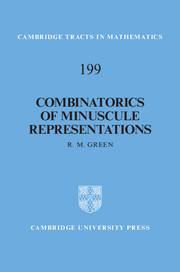Book contents
- Frontmatter
- Contents
- Introduction
- 1 Classical Lie algebras and Weyl groups
- 2 Heaps over graphs
- 3 Weyl group actions
- 4 Lie theory
- 5 Minuscule representations
- 6 Full heaps over affine Dynkin diagrams
- 7 Chevalley bases
- 8 Combinatorics of Weyl groups
- 9 The 28 bitangents
- 10 Exceptional structures
- 11 Further topics
- Appendix A Posets, graphs and categories
- Appendix B Lie theoretic data
- References
- Index
9 - The 28 bitangents
Published online by Cambridge University Press: 05 February 2013
- Frontmatter
- Contents
- Introduction
- 1 Classical Lie algebras and Weyl groups
- 2 Heaps over graphs
- 3 Weyl group actions
- 4 Lie theory
- 5 Minuscule representations
- 6 Full heaps over affine Dynkin diagrams
- 7 Chevalley bases
- 8 Combinatorics of Weyl groups
- 9 The 28 bitangents
- 10 Exceptional structures
- 11 Further topics
- Appendix A Posets, graphs and categories
- Appendix B Lie theoretic data
- References
- Index
Summary
In Chapters 9 and 10, we will study the rich combinatorics associated with the two 27-dimensional minuscule representations in type E6, and the 56-dimensional minuscule representation in type E7.
The numbers 12, 27, 28 and 56 figure prominently in many of these combinatorial structures, for reasons that we now outline. The 56 weights of L(E7, ω7) fall into 28 positive–negative pairs; these pairs correspond in algebraic geometry to the 28 bitangents to a plane quartic curve. It is not necessary for our purposes to understand the underlying geometric terminology, but for completeness, we remark that a nonsingular plane quartic C is a nonhyperelliptic genus 3 curve embedded by its canonical linear system. Each of the 28 bitangents is tangent to C at two points, which may coincide.
If any one of the 28 bitangents is removed, the remaining bitangents are in natural correspondence with the 27 lines on a cubic surface, and also with the weights of either of the minuscule representations L(E6, ω1) or L(E6, ω5).
Each reflection in W(E7) moves 24 of the 56 opposite weights in 12 opposite pairs. These pairs correspond to distinguished subsets of 12 bitangents among the 28. These subsets are the Steiner complexes, which are the main object of study in Chapter 9.
We start by studying the Gosset graphG1(E7, ω6) in Section 9.1. The vertices of the graph may be identified with the 56 lines on the del Pezzo surface of degree 2, which is discussed in Section 9.2.
- Type
- Chapter
- Information
- Combinatorics of Minuscule Representations , pp. 216 - 247Publisher: Cambridge University PressPrint publication year: 2013

